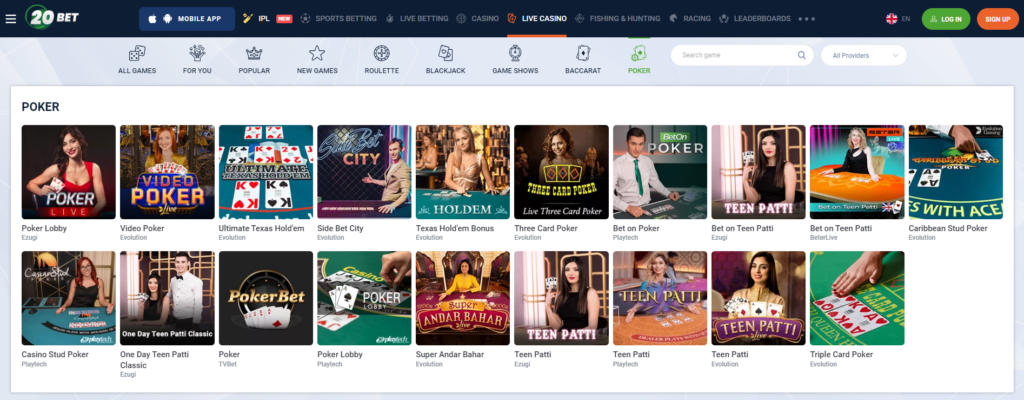Bluffing is an integral part of poker, and it is a skill that is easy to learn but requires time and experience to perfect. It is the ultimate deception and an advantageous ability to trick your opponent into folding. Bluffing involves a lot of psychology and careful analysis of the behavior of your opponents for it to be successful. When to bluff? Against whom can you bluff and have an excellent winning chance? We asked our experts these questions, and they provided the following guide and 8 poker bluffing tips.
Quick Jump ⇣
Advantages of Bluffing in Poker
Bluffing is a poker skill that you use to mislead your opponents; it is more than a simple trick and allows you to gain an edge over your opponents. In movies and popular culture, bluffing has been significantly glamorized, but in reality, it requires more thought, poker strategy and planning. One example is the need to analyze the behavior and playing tactics of your opponent and notice tells.
Credit: 22Bet
Join 22Bet and try your poker bluffing skills?
Claim your Welcome Bonus Now!The tells are physical or verbal signs that a person unknowingly makes when they do something that they know is not true. But it is also true that many good poker players have a good poker face – meaning they have a good grasp on their actions and don’t give anything away. Observing your opponents can help you notice some of their tells, but you also need to observe the table, know the bluff-to-value ratio, and apply other poker strategies to enhance your winning chances. We also share the critical pros of bluffing in poker:
- Assume a loose image – if you play more bluffs against your opponents, they’ll try to catch you in the lie and will usually try to overplay their hands. It can work in your favor as you can play your suitable poker hand to your advantage. It also helps you build an image as a relaxed player who may make reckless moves.
- Put your opponents on tilt – as the prime goal of poker is to win money, many players assume a terrible attitude when they lose money. Thus, you can use this to your advantage when you play a successful bluff against your opponents and show them that you’ve lied and won, which usually puts them in a poor mood or on tilt, and they are more likely to make mistakes.
- Hone your mental skills – because bluffing requires psychological ploys to intentionally mislead or deceive your opponents, it is a helpful action to practice your mental abilities. It would be best if you observed betting patterns and body language and recognized the right moment to act.
When to Bluff: 8 Poker Bluffing Tips
Now that we’ve covered the essential aspects of bluffing, here are our poker bluffing tips. Please read these carefully and remember that bluffing is easy to learn, but it takes time to master:
1️⃣ Master Your Poker Face
Poker face is not just a song from Lady Gaga, but it is a skill displaying your face without any interpretable expression. It is helpful when you are making a poker bluff, as in that case, you are making a bet with a hand you know is not the strongest. The way you present yourself at the poker table is vital, as it will put the other players at ease or on edge, allowing you to manipulate their perception of you and improve your chances of making a successful bluff.
2️⃣ Read Your Opponents
For a successful bluff, you must read your opponents. Observe their behavior, their speech, and their betting habits, and try to discern a pattern or notice a tell. Understanding and correctly interpreting the tells will help you note when your opponents bluff, when they have a strong hand and their confidence. The tells can be eye or mouth twitching, squinting, speech patterns, specific body movements, and the like.
3️⃣ Know When to Bluff
Knowing when to bluff is crucial for a successful bluff, and you should read the situation to see when and how often to do this. If you bluff too frequently, you will put your opponents on edge and will lower the effectiveness of your bluffs. If you bluff too rarely, you can become predictable, and your bluffs will more likely fail. Thus, carefully choose when to bluff by recognizing the playing style of your opponents. For example, you can have more tremendous success when you play against more cautious players who tend to fold more often.
4️⃣ Master the C-Bet
The c-bet or continuation bet is a valuable poker strategy; it is when you raise pre-flop and continue to bet again on the flop. You can use this strategy when you are trying to bluff your opponents, as the c-bet is a type of bluff. The c-bet intends to make your opponents fold by making them think you have a strong hand, and this is the key to bluffing.
Credit: 20Bet
20Bet has a varied poker offer where you can play and see how good you are at bluffing!
Claim your Welcome Bonus Now!5️⃣ Consistently Analyze the Table
Always analyze the table and your opponents’ behavior. Try to predict their moves and wait for a favorable situation on the table. It also involves studying the strength of your hand in relation to the community cards and trying to predict your opponent’s hole cards, whether they have a strong hand or a medium hand, and whether they would be more inclined to fold or call your bluff.
6️⃣ Steal the Blinds
While bluffing is represented as a large bet on the river in mainstream media, the truth is the opposite, as the best way to increase the number of chips is to steal the blinds. Stealing the blinds is a good strategy, as these are the forced bets in Texas Hold ‘em that the players on the left of the dealer must pay, and these increase the size of the pot. You can make a pre-flop bluff, which can be a beneficial strategy that you can use to steal the blinds.
7️⃣ Use the Power of Position
The position you play on the poker table also has an impact on your ability to bluff. If you play in an early position, you can’t get enough information about the playing style of the players, but you should always maximize your late position, which is known as in-position. The in-position player is the last one to act in a round; if you see more players checking, you can use this to your advantage and bluff, as the other players are likelier to fold.
8️⃣ Utilize the Semi-Bluff
There are three types of bluffing: the c-bet bluff, the semi-bluff, and the stone-cold bluff. We described the c-bet bluff above; the stone-cold bluff is when you make a bluff with no chances to improve your hand, and the semi-bluff is when you bluff with a weaker hand that has an opportunity to improve in later rounds. When utilized correctly, the semi-bluff is the best option to win, as you can make your opponent fold, or you can drastically improve your hand by the last street and win outright.
FAQ
What is bluffing in poker?
Bluffing in poker is a playing strategy when you make a bet with the intention of making your opponent fold even if they have a better hand. This is an integral part of poker used by all the players; convincing your opponent that you have a better hand is the true mastery in playing poker.
What skills do I need for successful bluffing?
To be able to make successful bluffs, you need to be good at judging people’s reactions and skills, as well as analyzing their playing style strategy and recognizing their physical tells. You also need to be able to predict their moves and even have the skill of manipulating your opponent’s actions.
How can I tell if someone is bluffing?
People tend to have physical tells when they bluff. These can be speech patterns, changes in breathing, eye movement, lips twitching, specific hand gestures, changes in posture, reddening of the skin, and many more. To note these, you need to carefully observe your opponents and try to make an educated guess based on their playing style, body language, and behavior at the poker table.
When not to bluff?
While bluffing is an essential play in poker, there are situations where it is not recommended to bluff, like when you play in an early position, when you play against multiple opponents, when you play against complete poker beginners, or against players who have a habit of calling too often.
Is bluffing a viable poker strategy?
Bluffing is not only a poker strategy; it is an integral part of poker. Granted, you can play poker and even win without bluffing, but in most cases, bluffing is very useful to increase the amount of your chips and win the pot.
What are good bluffing situations in a poker game?
You can bluff in many situations in poker. Still, the best bluffing opportunities are when you play in a late position and have a good hand, when you get a chance to make a c-bet, and when you play against players who are not very aggressive and tend to fold more often.














